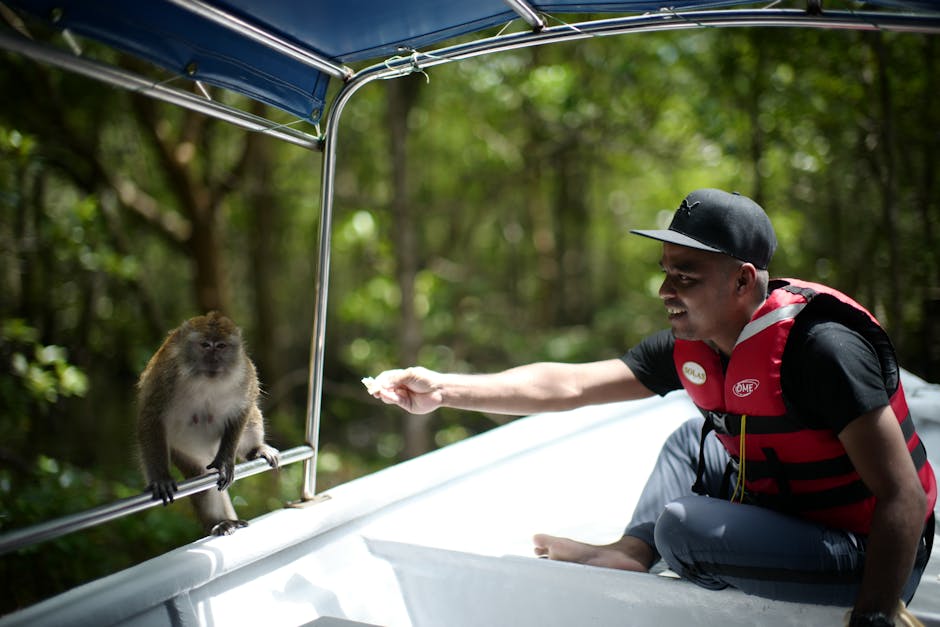
Choosing the Right Life Jackets for Your Boating Adventure
Embarking on a boating adventure is an exhilarating experience, but safety should always be the top priority. Ensuring you have the right life jackets can make all the difference in case of an emergency. From inflatable life vests to foam-filled jackets, there are various options to consider. Let’s dive into the importance of selecting the perfect life jacket to keep you safe on the water.
Importance of Proper Life Jackets
When it comes to life jackets, one size does not fit all. These essential pieces of safety equipment are designed to keep you afloat in case of an accident or unexpected immersion in water. They come in various styles, each catering to different water activities and individuals’ needs.
Choosing the right life jacket is crucial for your safety. Factors such as your body weight, the type of boating you’ll be doing, and the water conditions you expect to encounter will influence your decision. A well-fitted life jacket can prevent accidents and even save lives.
For boaters, anglers, and water sports enthusiasts alike, wearing a life jacket should be a non-negotiable practice. Even the most confident swimmers can find themselves in situations where a life jacket becomes their lifeline. It’s better to stay prepared than to face regrets later.
Moreover, the laws and regulations concerning life jackets vary depending on where you boat. Understanding the local requirements and ensuring your gear meets the necessary standards is essential. Compliance not only keeps you safe but also avoids potential legal hassles.
Types of Life Jackets Available
Life jackets aren’t just a one-style-fits-all accessory. Different designs serve different purposes, so it’s essential to choose the right type based on your planned activities. From bulky foam jackets to sleek inflatable vests, the variety can be overwhelming.
Inflatable life jackets have gained popularity for their lightweight and comfortable design. These jackets inflate upon contact with water, providing buoyancy when needed. They are ideal for boaters looking for freedom of movement without compromising safety.
Foam-filled life jackets, on the other hand, are inherently buoyant and require no manual activation. They are a reliable choice for those who prioritize simplicity and consistent flotation performance. Choosing between inflatable and foam-filled jackets often comes down to personal preference and intended use.
Specialized life jackets tailored for specific activities, such as kayaking, waterskiing, or sailing, offer additional features to enhance safety and functionality. These purpose-built jackets ensure that you are equipped with the right tools for your chosen water adventure.
Ultimately, the best life jacket is one that fits comfortably, is suitable for your planned activities, and meets safety standards. Investing in quality gear may require a bit more spending, but the peace of mind and protection it offers are priceless on the water.
Fitting and Adjusting Your Life Jacket
Once you’ve chosen the right life jacket, proper fitting is paramount. A well-fitted jacket ensures it performs as intended during an emergency. To test the fit, raise your arms upward—the jacket should not ride up but remain snug around your torso.
Adjustable straps and buckles allow you to customize the fit of your life jacket for optimal comfort and safety. Be sure not to overtighten, as this may restrict movement and cause discomfort. Finding the right balance between snugness and freedom of movement is key.
For children, selecting appropriately sized life jackets is crucial. Kids’ jackets come with weight and size recommendations to ensure a secure fit. Remember to regularly check and update their gear as they grow, as an ill-fitting jacket compromises safety.
Maintenance Tips for Life Jackets
To prolong the lifespan and effectiveness of your life jackets, proper maintenance is essential. After each use, rinse your jacket with fresh water to remove salt and debris. Hang it to dry in a well-ventilated area away from direct sunlight.
Regularly inspect your life jacket for any signs of wear and tear, such as fading, rips, or broken buckles. Ensure all zippers, straps, and closures are functioning correctly. Address any damages promptly to avoid compromising the jacket’s performance.
Store your life jacket in a cool, dry place away from extreme temperatures and chemical exposure. Avoid folding or compressing the jacket for extended periods, as this can damage the flotation material. Proper storage ensures your jacket remains in top condition when you need it most.
Navigating Waters Safely
As you gear up for your next boating escapade, remember that the choice of life jackets determines not only your safety but also your peace of mind. Investing in quality gear tailored to your needs ensures you can navigate the waters with confidence. So, whether you’re cruising along serene lakes or setting sail into the open sea, a reliable life jacket will always be your trusted companion.
